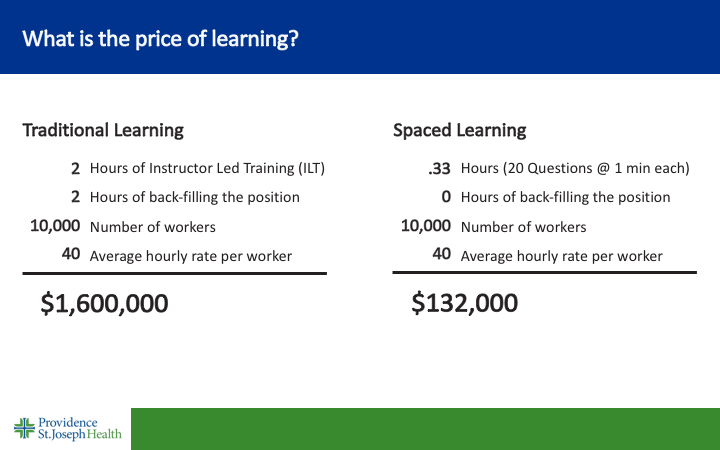Learning and development professionals are facing a tough road ahead. Now that working in a remote setting is mandatory, L&D professionals are stuck wondering how to keep their workforce engaged with remote training programs and daily business operations.
At a time when teams are separated and learning professionals still need to deliver learning materials, it’s important that employees are still being educated on new information as well as continuing to retain previously taught materials. Business needs to continue so people can be informed on the necessary knowledge and skills to stay productive and do their job properly. So how can L&D professionals continue with remote learning?
Studies have shown that 79% of knowledge is forgotten within the first 30 days of learning it. Forgetting is a natural occurrence, it’s simply just a matter of how the human brain works. However, by switching to a scientifically proven spaced reinforcement methodology, L&D professionals can begin to see significant improvements in employees’ knowledge retention and performance.
Qstream’s reinforcement methodology uses the spacing and testing effect, which is scientifically proven to increase knowledge retention by up to 170% and durably change behaviors with a measurable impact on business outcomes. This means that L&D professionals are able to use Qstream’s mobile microlearning technology to deliver new training information and ensure an increase in knowledge retention among learners.
In-Person vs. Remote Learning
The move to a remote workforce has forced L&D professionals to rethink the traditional training model they are used to. They now need to consider how to execute a new learning model that maintains the benefits of onsite instructor-led training and considers factors; such as being able to reach a learning audience at scale, get them to engage in learning, and provide them with valuable information to help them to be effective. Rather than expecting employees to independently access training information while they are working remotely, microlearning allows L&D professionals to push critical training information employees need to know in the flow of their work and in an engaging experience.
Microlearning
A recent survey found that nearly 60% of employees would use their company’s online learning tools more often if they were broken into shorter courses. So, by applying microlearning programs, which are designed to deliver short bursts of content to learners, employees are more likely to contribute and participate in them. An effective microlearning solution exceeds only providing learners with information by helping them improve their proficiency throughout the learning experience.
Data and Analytics
Learning technology like Qstream not only gives L&D professionals the tools they need to run effective remote microlearning programs, but also provides valuable data and insights into each employee’s performance. In-person training doesn’t give you these types of metrics, all you know is who showed up and who participated. Microlearning gives managers the data on proficiency metrics which allows them to have targeted coaching conversations on specific areas that they’d never had in traditional, in-person training.
Continuous Learning
Microlearning is a continuous learning program that helps to keep information top of mind all year round as opposed to one time in-person training sessions. Through this, Qstream microlearning programs help keep a remote workforce productive and engaged. These programs don’t consume as much time, and they provide only the most important, job-critical information. Training Magazine’s research states that employees received 46.7 hours of training per year which takes away from them doing work and being productive. Unlike hour-long training sessions that take employees away from their tasks, Qstream provides quick and effective remote learning programs.
Not only does microlearning save more time, but it is much more cost-effective. According to research from Training Magazine, enterprise organizations spend about $986 per learner. For larger organizations, these costs add up and in-person training doesn’t see results that translate to job performance. Microlearning removes all costs associated with in-person training such as backfilling positions, travel costs, and other expenditures needed to facilitate classroom training sessions.
The below image shows how one of Qstream’s customers, Providence St. Joseph’s Health, calculated the cost savings from transitioning from traditional training to Qstream’s microlearning technology to deliver training at scale to their entire hospital system.

Personalization
With Qstream, L&D professionals are able to design a more personalized learning approach that’s beneficial and relevant to the individual learner. In a traditional classroom setting, it’s a one-size-fits-all approach, which sometimes doesn’t pertain to everyone in the room. Rather than a universe of facts, microlearning focuses on the subset of concepts that matter most, distilled to the right size and focus for impact and engagement.
In fact, right now, remote learning has its own competitive advantage when it comes to educating and developing teams. Across the spectrum of learning styles, remote learning programs are able to easily scale training sessions, give teams greater understanding over their development, and provide data-driven metrics and insights for L&D professionals.






